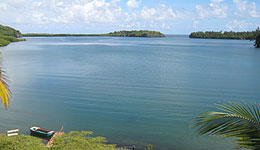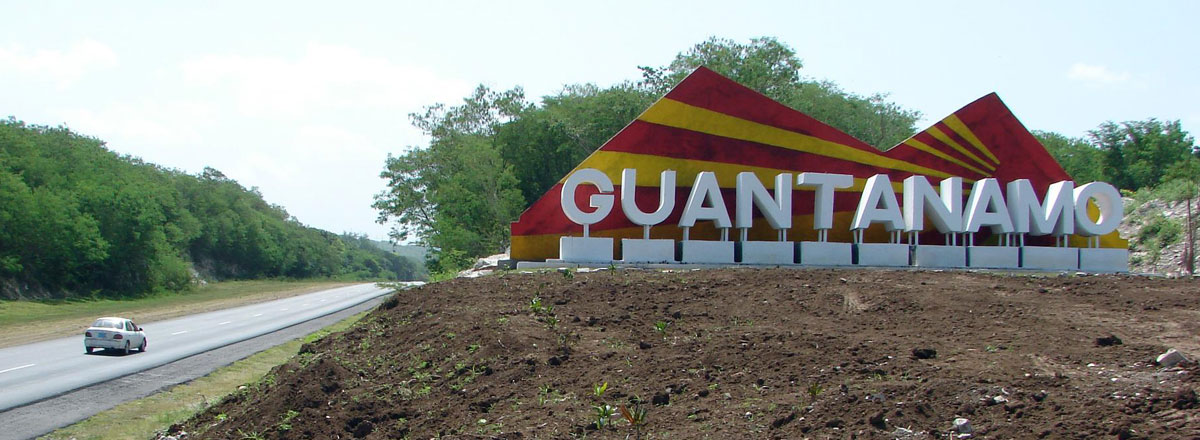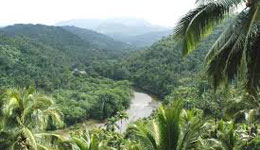Guantanamo is the easternmost province on the island. Here you will find the first villa founded in Cuba: Baracoa. Guantanamo borders with Holguin to the north and the Atlantic Ocean, the Caribbean Sea to the south, and to the west is Santiago de Cuba.
The cultural base of the province is enrooted in the strong influence of Haitian immigrants in the area. The majority of the descendents of the residents of Guantanamo are Jamaican or Haitian. The inhabitants were divided into two large groups following its traditions and above all the language. Its folklore is characterized through the arts; they have as cultural heresy the so called French tumbas, today mainly made up by Cuban citizens. Another rhythm typical of the province is called Changui, among others. In this region of the country was composed the song that identifies the island throught out the world: La Guantanamera. It was written by Joseito Fernandez in 1928, which later became a tremendous success when it made its debut in the radio and is still heard on radio and television in any part of the world.
Guantanamo has a mountainous geography which ends at the La Punta de Maisí, with its beautiful landscape and the variety of vegetation and fauna. The mountainous region covers over 75 % of the territory surface and its highest elevation is El Gato with 1181 meters above sea level and its main rivers are Toa, Guantanamo and Jababo. Guantanamo occupies 5.9 % of the total surface in the country.
The Marti Park and its Santa Catalina Parrochial Church surrounded by beautiful homes and the Municipal Museum which dates back to 1862 and was originally built as a prison are between most famous buildings in the city.
To the north of Guantanamo is Baracoa, the first villa founded on the island by conquistador Don Diego Velasquez in 1512. You can visit the Punta de Maisí Lighthouse dating back to 1555, the Cajobabo Beaches, the Guantanamo municipal museum, the San Carlos Creagh Palace, Mariana Grajales Coello Plaza, the Stone Zoo Museum, located in the Guantanamo-Yateras Road, the Cafetaleros Settlement in Yateras among other places of historic, cultural and natural interests.
Things to do
Attractions
- ✓ Canon del Rio Yumuri
- ✓ Palacio Salcines
- ✓ First Coffee Plantations in the Southeast of Cuba
- ✓ Catedral de Santa Catalina de Ricci
- ✓ Zoologico de Piedra
- ✓ City Hall.
- ✓ House of the Family Simon.
- ✓ Oldest House in the City.
- ✓ Coffee Settlements.
Attractions
- ✓ Spanish Casinos.
- ✓ Building of the Martinez Family.
- ✓ The Morillo Chico Fortress.
- ✓ Baptist Church.
- ✓ All The Saints Episcopal Church.
- ✓ The Monitongos Hills.
- ✓ Alex Urquiola Museum.
- ✓ Palacio Salcines Decorative Arts Museum.
- ✓ December 19 Caimanera Municipal Museum.
- ✓ Former Guantanamo prison.
Alejandro de Humboldt National Park

The heart of the Nipe-Sagua-Baracoa Mountain Group is found in the Alejandro de Humboldt National Park with some 70 000 hectares. This is an important ecological park where you can find close to 1 000 species, the third part of those reported in Cuba and only found in this region, representing the pluvial forests of the Caribbean region. The impressive and vast eco-system is considered practically virgin.
Hotel Guantánamo 3*





